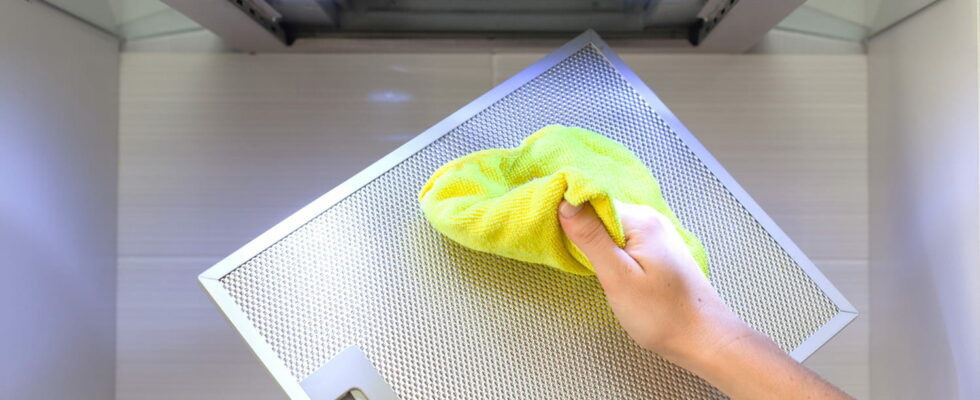Even if you are very careful, the extractor hood in your kitchen inevitably ends up getting clogged when you use it. Here are the right techniques for removing fat that sticks to your grill.
The range hood is an essential part of keeping your cooking space clean and odor-free. Used daily, it sucks up grease and vapors that are released when you cook. But it becomes clogged naturally and quickly with use. To maintain its effectiveness, it is crucial to clean it regularly. Here are some simple and effective tips to eliminate sticky fat.
Start by turning off and unplugging the hood for safety reasons. Next, remove the metal filter. This filter is the part that collects the most grease and is often easy to remove. Wash it in a mixture of warm water and washing-up liquid. If the grease is particularly stubborn, add a teaspoon of baking soda to the water to boost the cleaning effect. Let the filter soak for about half an hour, then gently scrub it with a non-abrasive brush. Rinse thoroughly with clean water and let it dry before replacing it.
To clean the hood surfaces, use a mixture of lukewarm water and dishwashing liquid. Dip a soft sponge in this mixture and pass it over all surfaces, paying particular attention to areas where grease is particularly encrusted. Avoid metal sponges and abrasive products which can scratch the surface of the hood. When finished cleaning, wipe surfaces with a damp cloth to remove soap residue, then dry with a soft cloth.
Baking soda is another effective solution for stubborn grease. Mix it with a little water to form a paste and apply it to the greasy areas. Let it sit for a few minutes before scrubbing with a soft sponge. This method is especially useful for the interior surfaces of the hood.
Citric acid, found in lemon, is also a great natural degreaser. Cut a lemon in half and rub the halves on the dirty areas of the hood. Let the lemon juice sit for a few minutes before rinsing with warm water. In addition to cleaning, lemon leaves a pleasant fresh smell.
For a more surprising but effective approach, try vegetable oil. Apply a small amount of oil to a piece of paper towel and rub it onto the greasy areas in a circular motion. The oil dissolves the encrusted grease, making it easier to remove. After this treatment, clean again with lukewarm water and dishwashing liquid to remove excess oil.
If you have a steam cleaner, it can be a great help in dissolving grease effortlessly. The hot steam loosens the grease residue, which you can then wipe away with a damp cloth. Cover your stovetop tightly to prevent the liquefied grease from falling on it. This method is especially effective for grease filters and hard-to-reach areas.
In addition to these tips, it is important to clean the activated carbon filter of your hood if it is equipped with one. This filter should be replaced every three to six months depending on use. To replace it, remove the grease filter to access the carbon filter, remove the old one and place the new one following the manufacturer’s instructions.
